Is the HTC One M8 Harman Kardon Edition the World’s Best Sounding Cell Phone?
It may seem strange to post a review about a Smartphone equipped with enhanced audio capabilities on a site dedicated to high-resolution audio but trust me it’s the right time and the new HTC One M8 Harman Kardon phone is the right device. While I’ve been patiently waiting for Apple to get the message that high-resolution audio is the next big thing, Sprint, HTC and Harman have gone ahead and delivered a Smartphone that can equal or beat the best portable high-end players AND do all of the stuff Smartphones do. I’ve mentioned a few of the features of this new phone over the past few weeks but it’s time to dedicate an entire post to the HTC One M8 because I’ve spent a lot of time listening to it.
Figure 1 -The phone loaded up with AIX Records HD-Audio files.
How did I come to have one of these remarkable phones? It turns out that one of my readers saw the post that I wrote following my visit to Harman about a month ago (click here to read the post) and reached out to me. He mentioned that Sprint had just released the HTC One M8 HKE phone and asked if I would be interested in checking it out. This guy is an executive at Sprint…you never know who’s reading what you write. It turns out he’s an audiophile and was instrumental in bringing other HTC and Harman executives together in hopes of delivering a phone that would measure up to audiophile standards. I told him that I would love to get my hands on one of the phones and within a few days, it had arrived.
This was my first experience with an Android phone. I’ve been an Apple user…and owner…since before the Mac. My kids and I would play the “Olympics Game” on my Apple IIe by rapidly pressing on a few of the keys and watching clunky sprites move around the screen. That was a long time ago.
It didn’t take long before I located the “HD-Audio” folder and auditioned the “high-definition” content that came bundled with the phone (yes, the folder on the M8 calls it HD-Audio…not high-resolution audio. I’m with them on that name…but the labels and other organizations have opted for high-resolution audio.) I auditioned ALL seven of the “HD-Audio” tracks that came with the phone they sent me through the two front facing speakers. I’d never heard sound this big coming from speakers/drivers built into a cell phone. It wasn’t far from the sound of one of those small Bluetooth speakers that are all the rage. Really.
Once I plugged in a set of Oppo’s PM-1 headphones, things were better but there wasn’t anything really stunning about the playback. The sound was about the same as a good quality MP3 file (at 256 kbps or even 320 kbps)…quite good but not up to audiophile standards. No wonder some of the other reviews that I had read online were lukewarm about the device. More than one online reviewer said not to bother with the Harman Kardon upgraded sound. They were wrong because they listened to standard resolution music files.
My thoughts immediately went to the content. There must be something wrong with the tunes that were bundled with the phone. So I offloaded all seven of the “HD-Audio” files and analyzed them for frequency response and dynamic range. To no great surprise, all but one of these tracks were PCM conversions that were clearly derived from 1-bit DSD sessions! The amount of ultrasonic noise was not just purple but bright red…this is where the problem was. Check out the spectrograms of a couple of the tunes:
Figure 2 – The spectra of a couple of “HD-Audio” tracks that were bundled with the HTC One M8 HKE phone. Notice the extreme amount of ultrasonic noise and limited dynamic range. [Click to enlarge]
I’m a stickler for clean and accurate tracks to show off the benefits of HRA but these tracks were clearly not carefully considered. The levels were all over the place and the recordings very distant sounding.
So what’s the solution? Load the phone up with some real HD-Audio files…so I did just that. I put over 30 tracks from my own catalog and started listening again. I auditioned big band music, classical piano, rock guitar, jazz, folk, vocal and just about every genre of music I have available and the output from the HTC One M8 Harman Kardon Edition phone was as good as I’ve heard from dedicated devices costing four times the cost of the phone.
I listened to AIX Records tracks in my studio, through my Oppo HA-1 and PM-1 headphones, using the analog inputs on my Benchmark DAC2 and using the included Harman Kardon AE in-ear headphones designed specifically for use with the HTC One (M8)…the fidelity approaches that of the best source components I own! All it took was to play some real high-resolution audio files to bring this amazing phone to its full potential.
Figure 3 – The Harman Kardon AE in-ear headphones.
The in-ear headphones are worthy of special recognition. Maybe it’s because I’m so disgusted by standard Apple ear buds and haven’t actually experienced many high-end in-ear monitors, but I was thoroughly impressed by the in-ears that came with the phone. They feature aluminum casings and custom 9mm drivers, which deliver the full range of both frequency response and dynamics directly to your ears. Even the low end was present because the soft silicone seals off the ear channel. I listened for over 3 hours on the way back from Boston last Tuesday without ear fatigue.
I’m going to do some research today on the Harman Kardon Clari-Fi and LiveStage signal processing technologies and will report my findings shortly. From looking at the TV and print ads, the folks at Sprint are leveraging these technologies as strongly as the audiophile capabilities of this phone. If it were up to me I’d make some real HD-Audio files available to reviewers/purchasers of the HTC One M8 HKE phone…one listen to a real 96 kHz/24-bit music file and you’ll steer your money away from the dedicated “high-resolution” players to this phone. It’s that good!
If you sign up for a 2-year plan with Sprint, the cost is $229.99…the phone by itself will set you back $799.99.

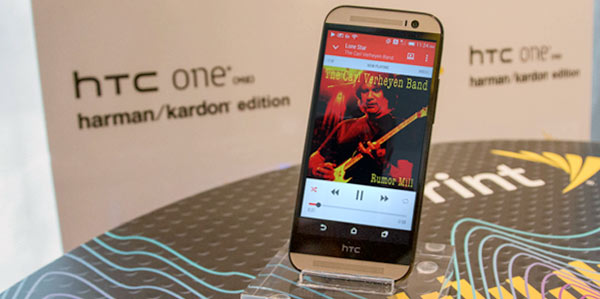
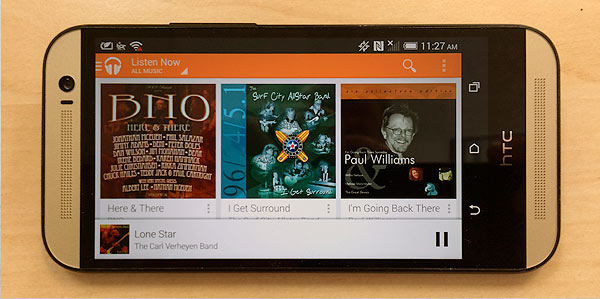
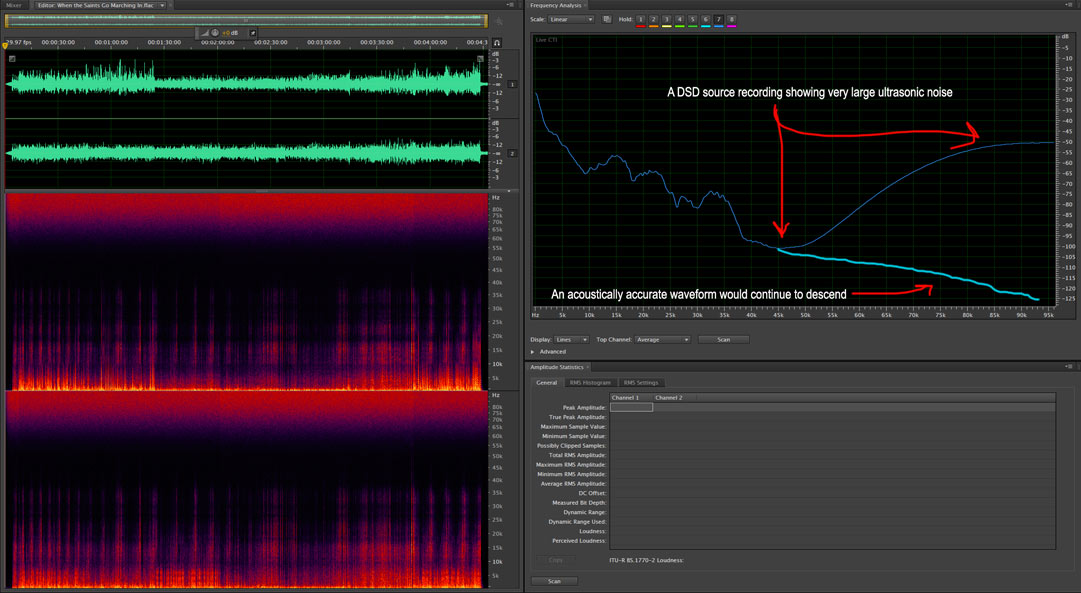
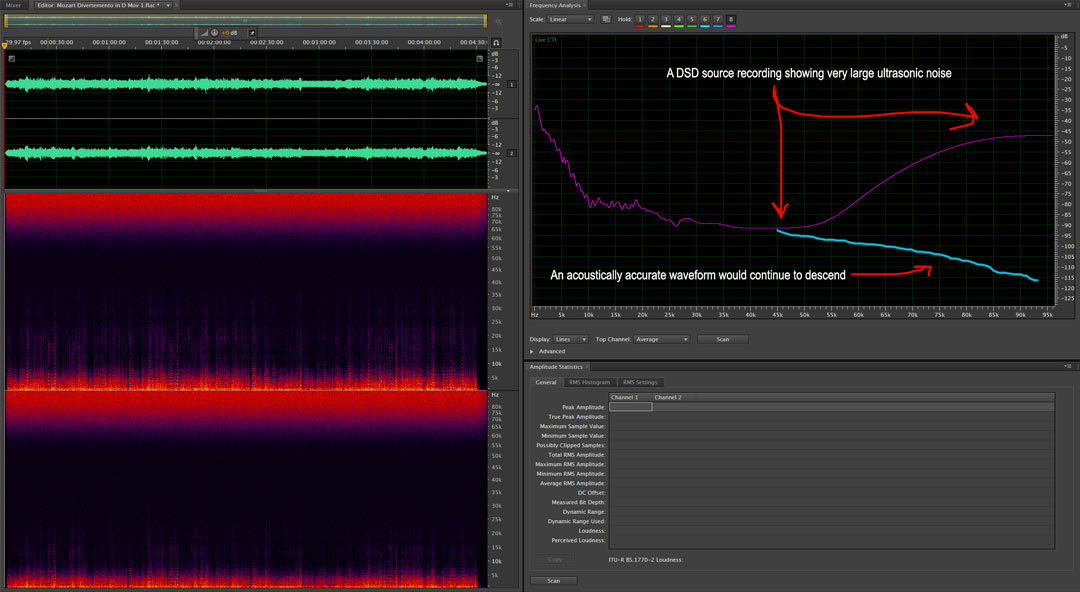
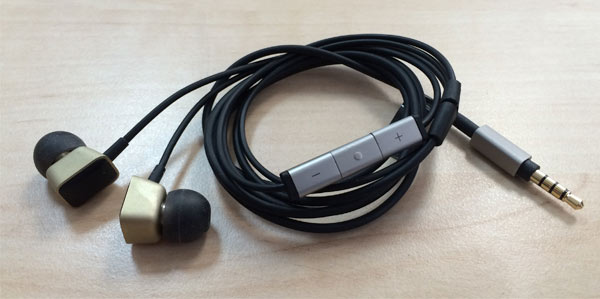
This phone is very interesting to me but the Sprint website is full of comments from people saying they can’t get it to make calls or get data! Hopefully this problem will get resolved quickly.
Looking forward to more info on the Clari-Fy technology but I don’t expect much from it. Most of these signal processing schemes seem to be of limited real benefit. You just have to have good source files to get good sound out. Garbage in, garbage out.
I haven’t actually tried to make a call on the phone…or surf the web.
Mark, what app are you using to play your HD Audio files on the M8 HKE phone. The best I’ve used is Neutron MP.
I just used the built-in player.
I enjoy your daily emails and the insight I get of the Recording business. But I have trouble trusting you because you never qualify your relationships with the companies whose products you gush about. We all need to make a living an if you receive any compensation for your reviews it’s ok. Doesn’t really deminish the honesty of the review for me. You just have to share that with your readers….and you DON’T. So I have to assume that your a bought man and sadly I fear that I am wrong!
Max, you make a good point. But as I’ve said previously on this site, I do not receive any financial compensation from the companies whose products I review. The guy from Sprint contacted me and said he’d like me to check out the new phone. He didn’t pay me to like the phone. I struggle with this issue because I spend a lot of time writing daily posts…without any financial upside.
If I may, I too look forward to reading Marks posts and gaining an incite on his perspective on the capturing of live performances. Mine is all about the playback, and that playback is only as good as the source. Can I suggest a visit to the ITrax website to make a purchase to show support to Mark. I would be disappointed to one day find that Mark has decided posting was not worth it anymore.
Thanks Brian. Obviously, I love the support and would encourage readers to check out my recordings…they are worth it.
Hi Mark
Would like to hear a comparison with the Galaxy note 3 if you could get your hands on one. I purchased the note
3 for a number of reasons one of them being the audio playback ability. The HTC was not available at the time
of my purchase.
I will reach out to Samsung and see if they’d be interested. Anybody with a Samsung connection?
Yes I’d like the Note 3 comparison as well.
Also, I’ve been trying to get the Note 3 to talk to the Fiio X3 via USB but no joy ATM. Being able to watch videos via Note 3 -> X3 -> RS Emmeline would be perfect for my holiday in-flight (and destination) entertainment.
I’m still a little confused by the specs of this phone. As far as i can tell the only audio difference between the regular M8 and harman kardon edition is software, the inclusion of the Clari-Fi and LiveStage signal processing algorithms. There appears to be no audio hardware differences, am I correct on that? To be competitive with audiophile players like A&K or Pono, the M8 would have to have a great DAC and amplifiers. But I haven’t been able to find these type of audio specs on the One M8. Does anyone know what they are?
I looked around for this information as well. Pretty skimpy in the detailed spec department. I’ll ask the people at Sprint and follow up.
Mark, as I said on other post, pretty much all of ‘flagship’ android phones support 24/192 playback, including Samsung S5, Note3, LG’s G2, G3, and even smaller companies’ such as Pantech Vega Secretnote.
Really Apple is far behind against Android these days (tho new iOS 8, they caught up a lot of stuffs)
Only difference is that HTC decided to partner with Harman Kardon, and H&K spends a lot of money to advertise such features.
Hi Mark,
I’m a big fan of your blog and uncompromising criticism towards the High-Resolution fraud and DSD BS marketing that we have until now been bombarded with. I can only celebrate your efforts to educate consumers about HD audio and the fallacies of DSD, without any personal gain whatsoever, and at the cost of exposing and annoying your peers in the business.
It is therefore still baffling to read an entirely subjective review of a phone – of all things – without offering any measurements data or specs to back your impressions with, let alone commenting the blatant lack of specs and measurements offered by Harman in regard to digital and analogue performance of the HTC M8. I know you’re one of the good guys out there, and I’m more than prepared to give you the benefit of the doubt on this one until I see some concrete and sufficient audio performance specs. Nevertheless, why use the typical rave review format of a device like those dozens of other golden ears reviewers that can clearly hear the difference between their CDs and DSD files of analogue recordings made 40 years ago, and on their 17 bit Amps? Why not wait to see specs, and why not ask Harman for them before posting your review?
What is the output impedance of the M8, THD+N, SNR, IMD, channel separation, etc., of both DAC and Amp? Does it make sense to say it will beat devices 4 times the cost of an iPhone (like hifiMAN players, A&K, FiiO, etc.), including something like a Headamp Pico, a Leckerton UHA-6 MkII, or a CEntrance Dacport or M8 that all cost less than the HTC, without first seing some specs? I know we trust your judgement and the experience it comes from, but why should we trust Harman without seing even the least of specs?
Still on the optimistic side, I hope those specs confirm your impressions.
Cheers
I take your point. The HTC post was about my impressions of the phone. I have reached out to the folks at Sprint, HTC and Harmon Kardon for information on the technical specifics and hope to be able to report on them in a post very soon. Yesterday, I spent a couple of hours messing around with the Clari-Fi processing and am planning to write a post on that and LiveStage as well.
There’s a more objective review of the audio capabilities of the HTC One M8 and the Samsung Galaxy S5 here:
http://www.anandtech.com/show/8078/smartphone-audio-testing-htc-one-m8-and-samsung-galaxy-s5
Your comments about DSD sourced files reminded me of a few Telarc SACDs that I have which were recorded at a 50 kHz sample rate for production of vinyl records (circa 1978). Doesn’t discuss bit size. Initial CD versions of these recordings were probably created by less than great methods. The SACD were created by creating DSD files from the 50kHz masters. These CDs also feature 44.1/16 CD layer, presumably derived from the DSD master – can’t be sure from the CD notes.
I also have an SACD of Kunzel/Cincinnati Pops’ ‘Round-Up’. This was originally recorded to two track on a Sony PCM 1625 (presumably 44.1/16) in 1986. It has been remastered using DSD. It says the stereo versions have been re-edited and remixed from the two track source tapes. The surround mix was created using proprietary means that appear to involve playing back the two track master in the original recording venue. Very strange.
Wonder what has been lost and what has been gained by doing this.
Nothing is gained by submitting good recordings to excessive processing.
So, I received my HTC One (M8) Harman/Kardon Edition last week and played around with a couple of different hi-res files. It seems the standard music player does not play back ALAC or AIFF files at (but works fine with WAV and FLAC). I am using Liztic to play back all formats anyway, so that works fine.
However, I am really wondering if the built-in DAC actually plays back in 96 or up to 192kHz or if the hi-res files actually get downsampled to 44.1kHz for playback (and might still sound more ‘dimensional’ due to the sound enhancing software)?
I tried other players (Liztic, Audio Evolution and USB Audio Player Pro) and they all return a message that the device cannot playback at the requested sample rate when I load a 192kHz AIFF file.
Is there any way to determine what the DAC really is capable of (respectively, the audio driver can handle)?
Thanks,
Michael
Hi,
Below is the link for HTC one M8 audio testing, the results are purely objective and I would like your subjective opinion on it, also how would the Harman Kardon edition better the standard HTC one M8.
Could you give a comparative subjective analysis on both normal M8 and Harman Kardon edition.
http://www.anandtech.com/show/8078/smartphone-audio-testing-htc-one-m8-and-samsung-galaxy-s5/2
I’m running to the university right now but will get back to you asap.